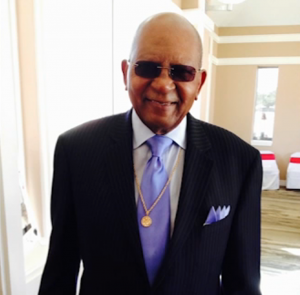Elena Craft, Ph.D., is Senior Director of Climate and Health
This is the first in a series of Global Clean Air blogs on COVID-19 and air pollution. EDF scientists will share data about pollution levels during quarantine from a local and global perspective, and provide recommendations for governments and companies to Rebuild Better.
A black man who lived most of his 88 years in Pleasantville was one of the first Houstonians to die from COVID-19.

James C. Campbell, Source: ABC13.com Houston
His name was James C. Campbell. He raised a family in one of the first neighborhoods in the city planned for black Houstonians, Pleasantville, which has been surrounded in the years since it was founded by congested interstates, salvage yards, metal recyclers, and a sprawling brewery where heavy trucks come and go day and night. Pleasantville residents still share stories about where they were when chemicals in warehouses exploded in the 1990s and forced them to flee their neighborhood for safety.
Just days after Campbell’s funeral in early April, as the coronavirus started to spread across Texas, UT Health researchers mapped neighborhoods across Houston like Pleasantville where residents suffering from underlying health conditions and from years of exposure to air pollution were at increased risk from the worst impacts of a COVID infection. The intention was clear: Data could help local government leaders decide how, and where, to marshal resources to protect the health of those who needed it most.
Disasters do not impact neighborhoods equally, data like that show. It’s clear during the coronavirus pandemic, just as it was clear during past disasters like Hurricane Harvey. In 2017, for example, in the first, and worst days of the storm, 93 percent of all known toxic emissions in all of Harris County were released within a four-mile radius of the predominantly Hispanic neighborhood Manchester — an area that includes Pleasantville — even though it makes up less than 5 percent of the county geographically.









